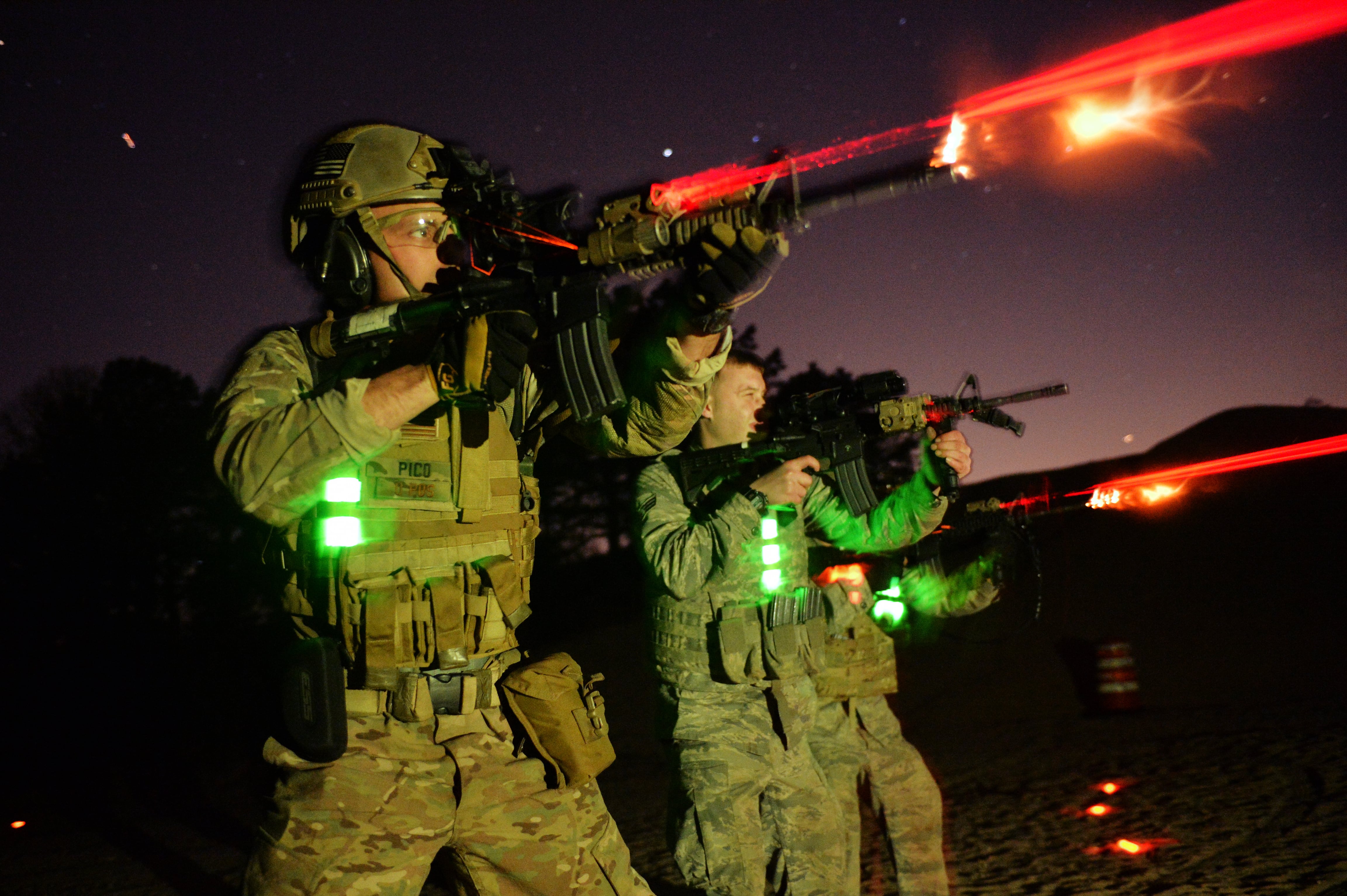The Air Force Research Lab developed a chemical light stick, or chemlight, replacement and gave the patent to a veteran-owned company for manufacturing and distribution, the service announced in a video this week.
U.S. forces use chemlights for a wide range of activities, from marking rooms during clearance operations to identifying friendly troops for aircraft.
The lights work through chemiluminescence, a reaction that produces light through the mixing of chemical substances.
But chemlights are single-use, meaning troops are often forced to carry strings of dozens when setting out on missions.
AFRL at Wright-Patterson Air Force Base developed a reusable solution that resembles a piece of chalk, but functions much the same as regular chemlights and can be used in the infrared light spectrum.
Researchers encased the liquid and oils found in chemlights into a waxy medium that can be used for writing and marking objects in the field. The pressure of writing breaks the tiny capsules in the wax, which causes the chemical reaction that creates the glowing effect.
Larry Brott, an engineer with AFRL’s materials and manufacturing directorate, came up with the idea after years of working in the automotive adhesives industry, where he used similar designs.
“This is such an intuitive use for this technology,” Brott said in an Air Force news release in March. “By packaging these materials in this form, we’re saving three things for the warfighter: volume, weight, and cost.”
Brott said the stick can be reused many times, and the substances contained are non-toxic.
Brott and his team were awarded a patent for their work in 2012.
AFRL’s technology transfer office then partnered with Battle Sight Technologies LLC, an Ohio-based startup founded by military veterans, to manufacture the new chemiluminescent chalk.
“As a former U.S. Army soldier and warfighter, I instantly saw the impact this technology could have for the end users,” Nick Ripplinger, Battle Sight’s president, said in the release. “After looking at it from a business standpoint it made sense to bring it to market.”
Ripplinger’s firm was selected through the Technology Acceleration Project, or TAP, a pilot program that links together researchers and entrepreneurs.
After entering into a licensing agreement that gave the company exclusive rights to use the AFRL technology for military and first responder use, Battle Sight began product development.
The company is currently producing a prototype infrared writing device called the MARC, which stands for Marking Appliance Reusable Chemiluminescent.
“We have some units in the field right now, mostly with the special operations community,” Ripplinger said in the AFRL video released Tuesday.
Air Force officials held up the chemlight replacement technology as an example of public-private partnerships streamlining the development process.
“This agreement is another example of the power of partnerships through AFRL,” Sunita Chavan, a civilian AFRL senior manager, said in the release. “Through the combined efforts of our innovative researchers and our commercial partners, this technology will soon be used for the good of our people in the field.”
Kyle Rempfer was an editor and reporter who has covered combat operations, criminal cases, foreign military assistance and training accidents. Before entering journalism, Kyle served in U.S. Air Force Special Tactics and deployed in 2014 to Paktika Province, Afghanistan, and Baghdad, Iraq.




